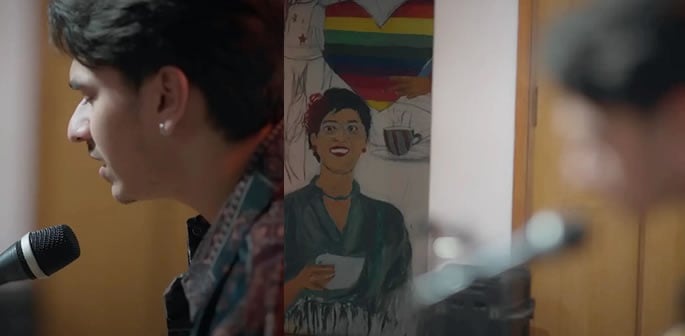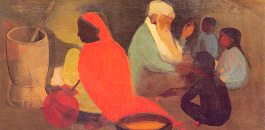“They are trying to influence the youth"
A recent episode of the Pakistani drama Parwarish has sparked backlash after viewers spotted LGBTQ+ symbolism in the background of one scene.
During a performance scene featuring the character Wali, a rainbow heart appeared on a poster behind him.
Though the moment was brief, many viewers perceived it as a deliberate inclusion.
Some argued that the image was used to promote values that conflict with local cultural and religious beliefs.
One user shared: “I was enjoying this show, but this scene changed everything for me.”
Another commented: “They are trying to influence the youth by subtly pushing such agendas.”
The controversy deepened when Abul Hasan, who plays Sameer in Parwarish, posted a photo of himself next to the same painting.
That post confirmed for some viewers that the image was intentional and not just a random piece of set decor.
Abul Hasan is no stranger to criticism. In the past, he stirred backlash by saying that religion is a “man-made” concept during an Instagram live.
His statement hurt many fans, and he faced significant online backlash.
It prompted him to change his username, delete old posts, and go silent for several weeks.
Now, with the Parwarish episode drawing scrutiny, his previous remarks have resurfaced online.
Critics are once again questioning his intentions and the values being conveyed through his work.
Some have called for accountability, claiming that the drama is being used to “normalise agendas” that do not reflect the country’s cultural fabric.
Despite the backlash, Parwarish has been widely praised for tackling issues like generational conflict, mental health, and parenting challenges in modern Pakistan.
The performances have received acclaim, and its storyline has been appreciated for portraying both teenage and adult struggles with realism and nuance.
However, the incident highlights the tightrope that creators often walk when addressing contemporary themes in Pakistani media.
While some applaud the show’s courage in exploring complex topics, others demand clearer boundaries when it comes to cultural and religious sensitivities.
As the debate around Parwarish continues, questions remain about artistic responsibility and the role of subtle symbolism in visual storytelling.
Whether the poster was a conscious creative choice or a minor oversight, it has already stirred significant debate.
The creators of Parwarish have yet to respond to the growing criticism, leaving audiences speculating about the intent behind the scenes.






























































